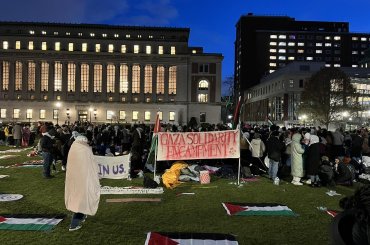In Saree Makdisi’s 2008 book Palestine Inside Out: An Everyday Occupation he makes the important point that while the Israeli-Palestinian conflict receives the most international attention at times of great violence, the occupation can actually be best understood by looking at the daily challenges of Palestinian life under Israeli control. He describes in detail the “legal” and administrative mechanisms Israel has constructed to dispossess Palestinians of their land in order to expand its control through settlements, restricted roads, curfews and other laws which limit or bar Palestinian freedom of movement.
Today, Akiva Eldar reports in Haaretz on a newly discovered Israeli operation to strip West Bank Palestinians of their residency rights, which once again demonstrates Makdisi’s point. Eldar explains:
Israel has used a covert procedure to cancel the residency status of 140,000 West Bank Palestinians between 1967 and 1994, the legal advisor for the Judea and Samaria Justice Ministry’s office admits, in a new document obtained by Haaretz. The document was written after the Center for the Defense of the Individual filed a request under the Freedom of Information Law.
The document states that the procedure was used on Palestinian residents of the West Bank who traveled abroad between 1967 and 1994. From the occupation of the West Bank until the signing of the Oslo Accords, Palestinians who wished to travel abroad via Jordan were ordered to leave their ID cards at the Allenby Bridge border crossing.
The article continues:
If a Palestinian did not return within six months of the card’s expiration, their documents would be sent to the regional census supervisor. Residents who failed to return on time were registered as NLRs — no longer residents. The document makes no mention of any warning or information that the Palestinians received about the process. . .
The Central Bureau of Statistics says the West Bank’s Palestinian population amounted to 1.05 million in 1994, which means the population would have been greater by about 14 percent if it weren’t for the procedure.
Palestinian negotiator Saeb Erekat responded to the Haaretz report saying that the policy should be considered a war crime and amounts to “a systematic policy of displacement in order to gain land for the expansion of more settlement-colonies and to change the demographic composition of the occupied Palestinian territories.”
Stories like this are a useful reminder that the ongoing displacement and dispossession of the Palestinian people is a daily, and often mundane, affair, which is not to say that the results are any less devastating. As Makdisi writes after describing the story of one Palestinian family torn apart through a similar administrative obstacle:
Encounters like the mediated one between Sam Bahour and the Israeli soldier-administrator in Beit El may not be spectacular: since they occur on an individual and intimately personal scale, they are usually played out silently and invisibly. But, since they are the very tissue and fabric of which Israel’s military occupation is made, they cumulatively set the stage for the more overt acts of violence surrounding them. Such violence does not always assume the form of large-scale combat. Much more often, the Israeli project of claiming land and, whenever possible, clearing it of Palestinians, takes palce in an endless chain of small, invisible, almost – but quite – banal episodes, the background music of the occupation, whose real significance only becomes apparent when it is cumulatively assessed.

